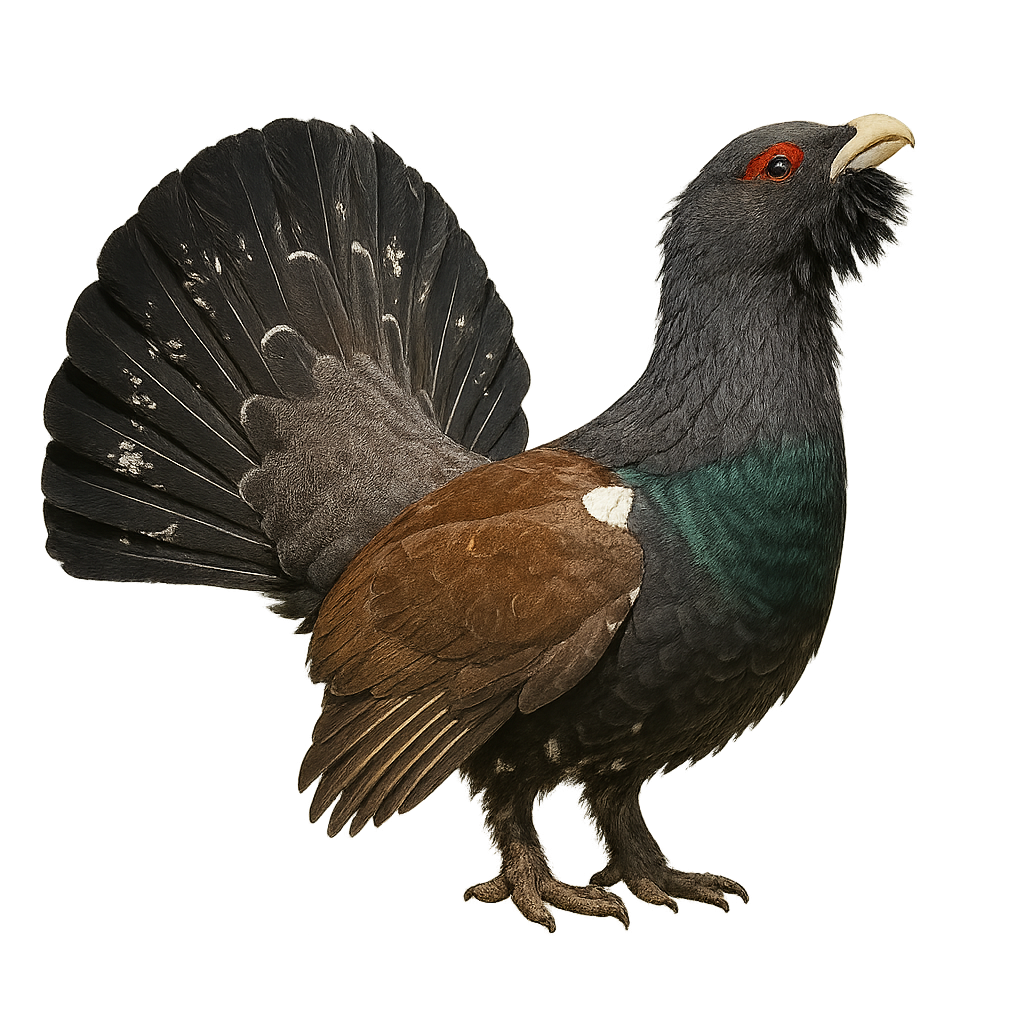Your wildlife photography guide.
Explore the western capercaillie in detail, study its behavior, prepare your shots.
Where to observe and photograph the western capercaillie in the wild
Learn where and when to spot the western capercaillie in the wild, how to identify the species based on distinctive features, and what natural environments it inhabits. The WildlifePhotographer app offers tailored photography tips that reflect the western capercaillie’s behavior, helping you capture better wildlife images. Explore the full species profile for key information including description, habitat, active periods, and approach techniques.
Western capercaillie
Scientific name: Tetrao urogallus

IUCN Status: Vulnerable
Family: PHASIANIDAE
Group: Birds
Sensitivity to human approach: Very shy
Minimum approach distance: 40 m
Courtship display: March to May
Incubation: 26-28 jours
Hatchings: April to June
Habitat:
Coniferous forests and mountains
Activity period :
Primarily active during the day, with peak activity in the morning and late afternoon.
Identification and description:
The Capercaillie is a large bird of the pheasant family, easily recognizable by its imposing size and distinctive plumage. It measures about 80 cm in length, with a wingspan of 1.2 meters and a weight ranging from 3 to 6 kg for males and 2 to 3 kg for females. The male's plumage is dark, with a reddish chest, a crest of feathers on the head, and a large V-shaped tail. The female, on the other hand, is more discreet, with a brown mottled plumage that allows her to better blend into the environment. The Capercaillie primarily inhabits coniferous and deciduous forests, particularly in the mountains and wooded areas of Europe, notably in France, Switzerland, Germany, and other mountainous regions. It feeds mainly on young shoots, seeds, fruits, and insects. This bird is also known for its spectacular mating displays, during which the male puffs up his chest, spreads his tail, and makes powerful calls to attract females. Although the species is not immediately endangered, the Capercaillie faces threats from deforestation, human disturbance, and habitat loss.
Recommended lens:
300 mm – adjust based on distance, desired framing (portrait or habitat), and approach conditions.
Photography tips:
Use a telephoto lens to photograph from a distance, respecting the species' discreet nature.
Photograph early in the morning or late in the afternoon when soft light highlights the male’s plumage during his courtship displays.
Look for him in conifer forests or mountainous wooded areas, especially in dense pine forests and heathlands.
Be patient and discreet to avoid disturbing his natural behavior.
IUCN status: Near Threatened. Respect his habitat and minimize disturbance, especially during the breeding season.
The WildlifePhotographer App is coming soon!
Be the first to explore the best nature spots, track rutting seasons, log your observations, and observe more wildlife.
Already 1 429 wildlife lovers subscribed worldwide

